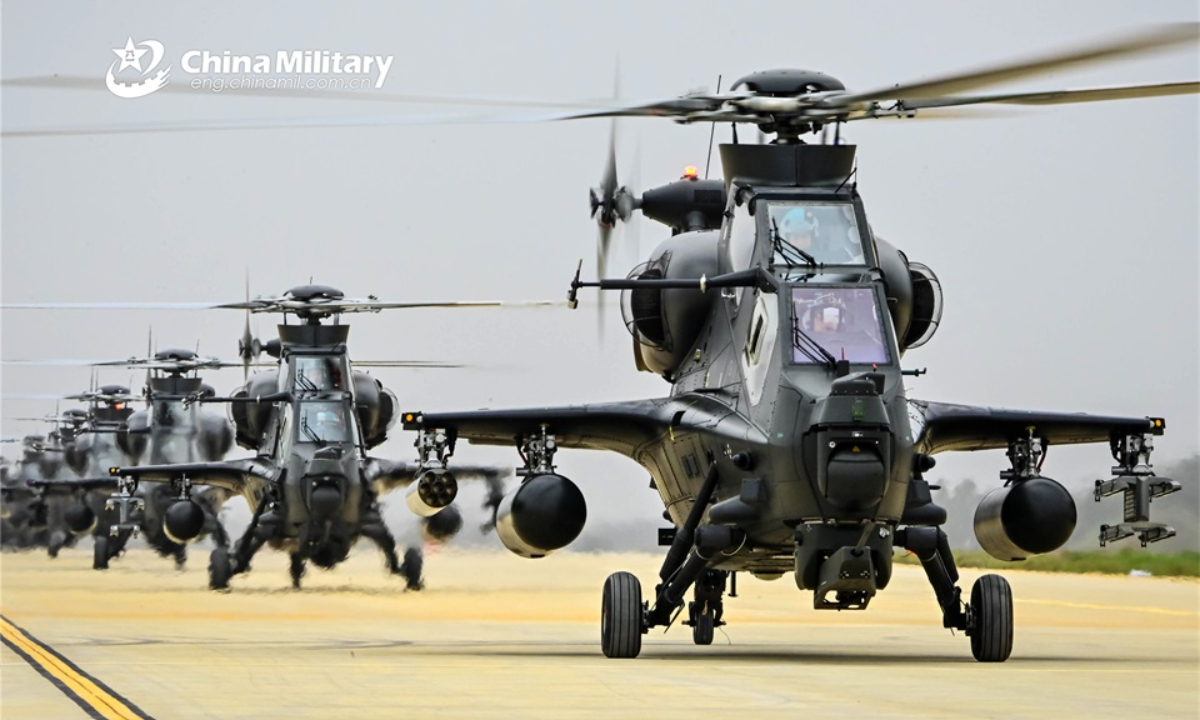
WZ-10 attack helicopters attached to an army aviation brigade under the PLA 73rd Group Army lift off for a flight training exercise on May 10, 2022. The exercise focused on subjects such as emergency combat sortie, formation flight and firepower escort, aiming to beef up the troops' capability in complex conditions. Photo:China Military
China’s new helicopter is already in the making, and Chinese helicopter designers are looking to accelerate its development, according to political advisor Wu Ximing, who is also the designer of the Z-10 attack helicopter, shortly prior to the ongoing annual Two Sessions.
“When talking about helicopter products, we should not simply develop what foreign countries have, instead we should develop what fit our country the most. They must integrate with China’s current and future development, together with technological development, so as to fit even the development in the 20 to 30 years in the future. We must accurately judge and find a position,” Wu recently told China Central Television (CCTV).
“A new product is already on its way, and I hope it can speed up. We will make constant efforts to speed it up,” Wu said.
Over the 40 years of helicopter development, Wu and his colleagues have established a pattern characterized by “exploring a generation, pre-studying a generation, designing a generation and producing a generation,” with multiple choppers under development systematically, CCTV reported.
As the chief designer of the Z-10, China’s first dedicated attack helicopter that is recognized as one of the most powerful in the world, Wu pushed forward China’s helicopter technology by 20 years.
As a member of the 14th CPPCC National Committee, Wu prepared three proposals for the ongoing Two Sessions, suggesting approving a major national project on utility aviation industry, enhancing procurement of domestically developed helicopters in the national utility aviation field and building a talent system in aviation research and development, according to the proposals viewed by the Global Times.
Utility aviation refers to civilian aviation activities other than public transport, which includes disaster relief, climate survey, maritime surveillance and scientific research. As an important part of utility aviation, helicopters are expected to have a wide development prospect, observers said.
Wu said that helicopters will also see increased applications in urban transportation and transportation in remote regions.
“They may be called electric aircraft, but at their core, they are helicopters,” Wu said.




